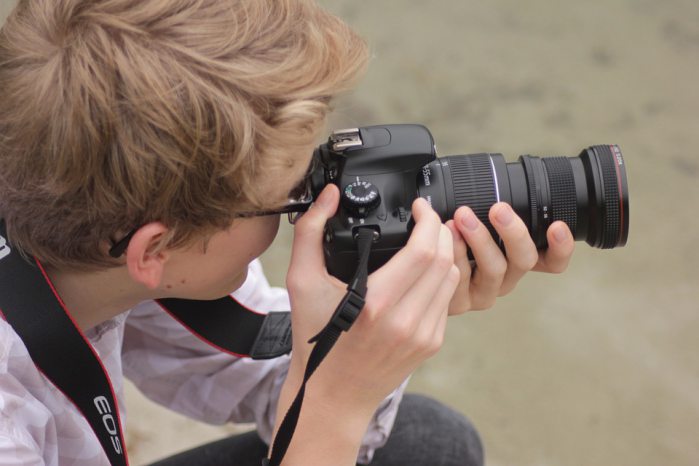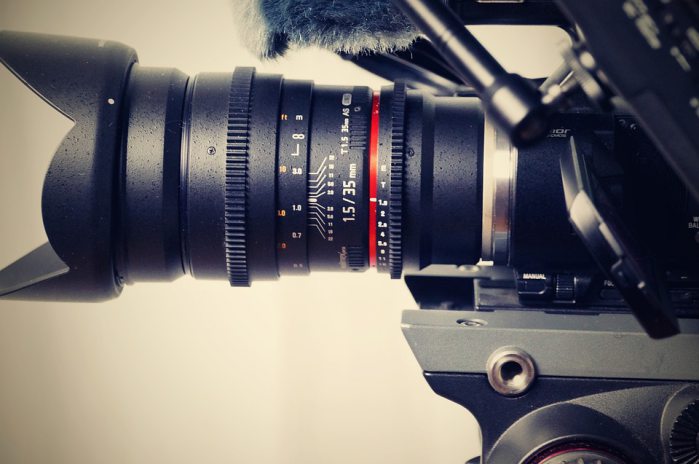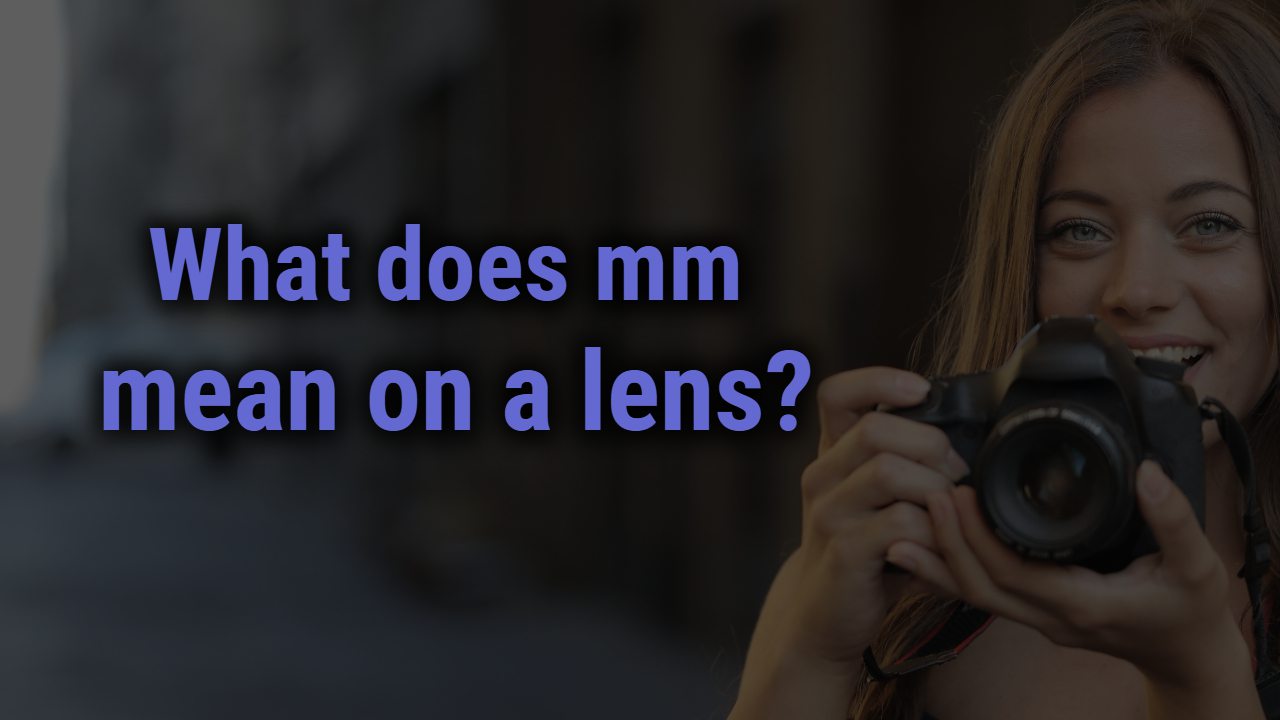Basically, mm is an abbreviation for millimeters. It is a unit of length used in the measurement of lenses and other optical or photographic equipment. For example, if you see “28 mm” below the brand name of a lens, it means the focal length of that lens is 28 millimeters. The larger the number is, the wider the photo will be.
This mm scale tells you how wide an opening the lens will have so you can decide if it will cover your needs as a photographer. The tiny units of measurement are used to describe camera lenses.
A 35mm lens, for example, is a wide-angle lens that comes in handy while doing close-up photography, such as capturing portraits. Many people think the mm on a lens is the diameter of the front element.
It’s not! Here are a few examples using my Nikon 24-85mm f/3.5-4.5G to show how mm relates to the focal length of your lens. Every lens’s focal length is measured in millimeters. Unlike the measurement of frame size, the term mm refers to the lens’s focal length, not the physical width of the lens.
This Post Contains
What is a Camera Lens?
If you have ever looked at the front of a camera, it has several glass pieces on it that are called lenses. A camera lens is an optical device through which visible light is focused to form an image of a scene at the focal plane for that particular lens.
A camera lens is a piece of equipment that you attach to the front of your camera to help you take better photographs. Essentially, its function is to gather light and transfer it to your digital device, where it appears as an image.
The lens is an essential part of a camera. It captures light and takes pictures. Lenses can be extremely simple or very complicated. It is located in front of a camera and is usually removable, although some cameras come with fixed lenses.
The lens is the glass or plastic “eye” of a camera. A lens can be attached to a camera, called a lens mount, and is used to form images by focusing light onto an image sensor (such as film or a digital camera sensor).
The lens is an optical device that is mounted to the camera body. It determines what your image will be composed of, as it helps focus light onto the camera’s image sensor so you can capture a viewable image.
A camera lens is a vital part of classic photography, and it is the accessory that allows you to control how the light affects your shot. These days, it is easy to get caught up in digital photography, using the standard camera you already have on your cell phone.
But modern smartphones are lacking when it comes to the precision needed for professional work. Most smartphone cameras do not produce color-accurate images, and a lens can make all the difference.

Types of camera lenses
Changing your camera’s lens can change everything about the images you take. From wide-angle and telephoto to ultra-wide and fisheye, view our complete list of lenses and get ready to explore this exciting new creative frontier.
Wide-angle lenses
Wide-angle lenses have a very wide field of view compared to your normal lens. They are used to capture a wide-angle scene, such as a landscape or an entire building, not just a portrait.
Wide-angle lenses are the perfect solution for getting shots with a very broad perspective. They can help you frame a setting in a way that’s from eye level, giving you the chance to show off all kinds of majestic landscapes and architecture shots.
Wide-angle lenses are ideal for landscape and architectural photography. They make distant objects appear nearer and can be used to exaggerate the size of a building or wider area of a landscape.
Wide-angle lenses are the best choice to help you fit more of a scene into your picture. They are commonly used to capture large groups of people, or vast landscapes, architecture, and interiors. Zoom lenses allow you to zoom in close to capture details that a wide-angle would not be able to do.
A wide-angle lens is a lens whose focal length is shorter than the short side of the film or sensor size. A normal lens, when used on “full-frame” 35mm cameras (i.e., 35 mm film cameras, with an image area equal to 24×36 mm), gives an angle of view similar to human vision.
Most current digital SLRs use a smaller digital sensor designed for APS-C-sized lenses, or the physically larger “full-frame” 35mm film, to enable them to use a wider range of lenses and yet still show their full-frame equivalence on the camera’s viewfinder or display.
Telephoto lenses
Telephoto lenses are great for taking photos of animals, sports, or other things that are far away. There are many different kinds of a telephoto lenses, some made by Canon and others by Nikon.
They work by using multiple lenses with numerous glasses to bend the light in special ways so they can focus on very small subjects from very far away. A telephoto lens is a camera lens that has a longer focal length than normal, and if you are photographing from a distance, then this will mean that your subject will appear closer.
A telephoto lens brings near and distant subjects closer at a high magnification than is possible with the objective’s normal focal length. In the case of a format that has an almost fixed proportion, such as the 35mm SLR, The Telephoto lens reduces the angle of view so that what was once a close-up is now rendered as a long shot.
Telephoto lenses are a special type of lens that allows you to get up close and personal with a subject while keeping some distance between you and your subject. This is accomplished by packing two pieces of glass into the same lens.
In tech terms, telephoto lenses are called ‘complex’ lenses because of their great number of optical elements. The largest telephoto lens for any camera is the 600mm f/4 Super Telephoto, which can be attached to a full-frame digital SLR, like our Canon EOS 6D.
Ultra-wide lenses
Ultra-wide lenses are perfect for shooting in confined spaces and also for capturing sweeping vistas. These lenses capture a large scene, creating a “wide-angle” image that allows you to fit more into the frame than ever before.
Ultra-wide lenses are for creative photographers who love unique perspectives. They can capture sweeping landscapes and dramatic architectural details, as well as larger spaces such as indoor parties and stage shows.
No matter the occasion, ultra-wide lenses can help you create some amazing pictures. Ultra-wide lenses are used for including as much of the scene as possible in the frame, such as a road or a view.
The characteristics of ultra-wide-angle lenses can make them good choices for architecture as well as landscape photography, and these lenses bring architecture and landscapes into dramatic focus.
Among the most sought-after types of lenses, ultra-wide-angle models have a focal length of 10mm or less and can produce a sense of depth and perspective that’s rarely seen in photographs taken with more standard lenses.
In addition, the ultra-wide aperture at the heart of ultra-wide-angle models often allows for shallower depth of field and handheld shooting at slower shutter speeds, making them ideal for low-light situations, such as sunset, where the sun is at a low angle relative to the horizon.
Fisheye lenses
A fisheye lens is a special kind of wide-angle lens—the kind of lens that brings a lot of the world in. It’s perfect for taking photos at night because it has a big aperture that lets lots of light in. Perfect for checking up on vandalism in your neighborhood, or taking photos outside at night. The fisheye lens is great for creating an artistic, circular effect in photos.
Fisheye lenses are a type of lens originally developed for visual surveillance, but they are also used in many other fields. The specific purpose of the fisheye lens is to focus as much light into a small circle.
A fisheye lens is the opposite of an ordinary lens. Instead of creating a circular or elliptical picture, it captures everything within its 180° field of view as an extreme panorama–i.e., it does not produce circular images, but rather allows you to see a circular image on your camera’s sensor.
A fish-eye lens is a type of lens, usually an extremely wide-angle lens, that produces circular images with extreme distortion and it gives your pictures a circular look. It has the same angle of view as a human eye. A fisheye lens refers to a family of lenses for single-lens reflex cameras that produce circular images with extremely large projection angles, ranging from 180° to 350° — depending on the lens.
What does mm mean on a lens?
The term “mm” stands for millimeters. This designation refers to how wide the lens is capable of opening up, which allows you to use the lens’s full capacity to focus or adjust its tightness to appear as though you are close to the subject.
Wide-angle lenses allow you to capture more of an image than a macro. All camera lenses have a measurement called the millimeter (mm) focal length. This number gives you an idea of how wide or long the lens is going to shoot. It’s also commonly used to identify zoom lenses, which change the mm of the lens as they are zoomed in or out.
There are several different lens sizes that digits can represent, and the most common are 35mm, 50mm, and 85mm. Different lens sizes make a difference in the angle of what your images can capture.

A camera lens is an optical instrument that collects as well as focuses light onto the surface of some recording medium (film or digital sensor) to create an image. The focal length, or focal distance, of a lens, is the distance from the optical center of the lens (its geometric center) to the plane at which the image is formed.
There are two basic types of camera lenses: zoom lenses and fixed-focal-length lenses. A zoom lens is one whose focal length can be changed by rotating a barrel containing various lens diameters within a common barrel.
A fixed-focal-length (or prime) lens has a single focal length but can be focused manually. Some special-purpose lenses have variable focal lengths, with one type of variable focal length being described as “interchangeable.”
The millimeter is a measurement system that indicates the objective lens size. For example, a 75-300mm lens can be found on an SLR camera. The metric multiplier mm has nothing to do with the focal length or angle of view; it only lets you know the physical size of a particular lens.
Conclusion
When shopping for a camera lens on the Internet, many lens features are confusing. Knowing about the minimum and maximum focusing distance will help you when shopping. Some lenses have minimum focusing distances that are greater than zero; this allows you to take closer shots. It is good to know the difference between mm and inches so that you can better understand which lens will fit your photography needs.
To understand the mm scale on a camera lens, ( For example, if you see a lens say 50-200mm, then that means that it’s 50mm wide at its widest point and 200mm when zoomed in.) it’s important to understand its significance and how it works.
It isn’t about millimeters of quality or a number assigned arbitrarily by the manufacturer but can be easily understood if you know what it represents. In short, it means- mm is an abbreviation of millimeters. If you see mm printed on a lens or the side of a camera body, it means the measurement of the distance between two fixed points on the lens.




